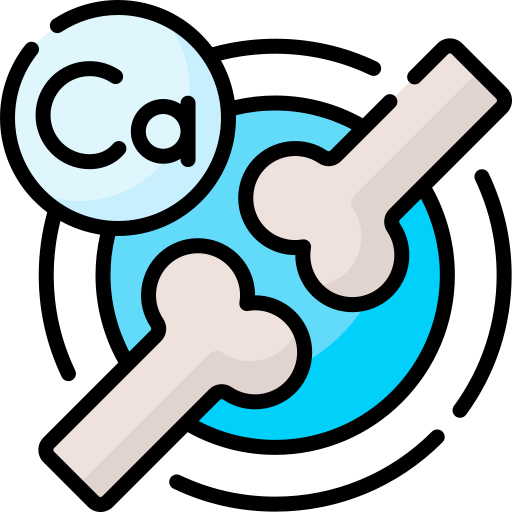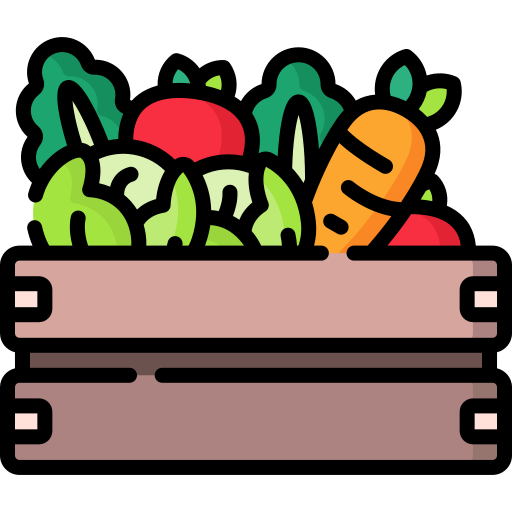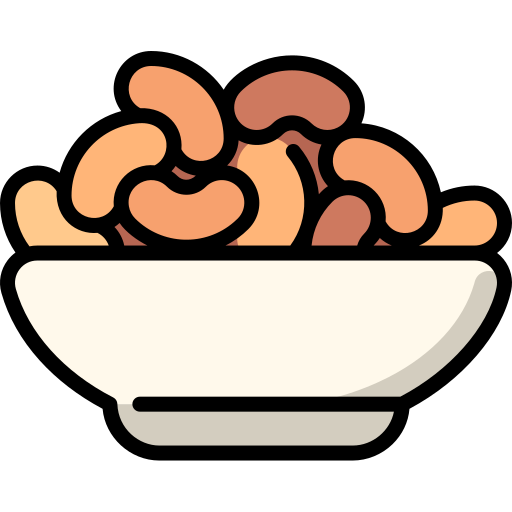
Introduction
Calcium (Ca) is an essential micronutrient that's synonymous with dairy, but in reality it's found in more than just milk. Not only that, calcium is critical for many bodily functions, not just bone health. It's so important in fact, that calcium is just one of the 4 micronutrients required to be on a standard nutrition facts label, with the others being vitamin D, iron, and potassium.

High Calcium Foods

What is Calcium?
We all know that proper calcium consumption is vital for strong teeth and bones. But how important is it, and what else is calcium used for? Calcium is technically an electrolyte, along with sodium, potassium, and magnesium. Calcium plays a crucial role in the contraction of muscles, as well as the proper sending of nerve signals. Calcium also assists in blood clotting, along with vitamin K.
Calcium is the most abundant mineral in the body, and about 99% of the calcium stored in the body is found in the bones. When calcium is needed, the body can pull from its reserves in the bones to utilize throughout the rest of the body. When calcium is needed in the body, parathyroid hormone (PTH) will signal the bones to release calcium into the bloodstream. PTH also signals the kidneys to release less calcium into the urine, as well as activating vitamin D to improve calcium absorption.
When calcium is sufficient, the horemone calcitonin works to do the opposite, lowering calcium in the blood and raising it in the urine. The vast majority of calcium found in the body is in the form known as "calcium hydroxyapatite", a combination of calcium and phosphorus. Bones, unlike teeth, undergo frequent remodeling, requiring the regular resorption and deposition of calcium into bone tissue.
However, calcium doesn't operate independently. Both calcium and vitamin D are essential for bone health, as vitamin D helps absorb calcium in the diet. Vitamin K also helps with the absorption of calcium in the diet. Both vitamins D and K are fat soluble, so it's best to consume these with healthy fats, such as avocados, nuts, or seeds.

Benefits of Calcium

Symptoms and Causes of Low Calcium (Hypocalcemia)
.png)
On Food and Supplementation
The body does not naturally produce calcium. Therefore, it must be obtained, either through food or supplementation. Below, I will lay out many common food sources of calcium, broken down by food group. These groups include dairy, vegetables, and fish. However, calcium is quite hard to get enough of without going out of your way. Outside of dairy, there are few sources of calcium, including poppy seeds, sardines, soy, and dark green leafy vegetables.
If you require more calcium than you can naturally get through food, you can also consider a calcium supplement. Most multivitamins already include calcium in them. This is the one that I take, which has 210 mg (16 %) of calcium. But some people may need more calcium than diet or a multivitamin can allow, and in that case you can then take a dedicated calcium supplement. The main form of calcium supplmentation is known as "calcium carbonate". If you are one of the following, you may consider talking with your healthcare provider about supplementing with calcium:

Daily Consumption

Foods High In Calcium
Fish and Seafood (Raw unless specified)

Beans (dried)

Vegetables (Raw)

Nuts

Seeds

Dairy

Other

Best Sources of Calcium
Per serving: Casein protein powder - 580 mg (1 scoop, 30 g)
Per 100 g: Casein protein powder - 1,933 mg
Per 100 cal: Casein Protein Powder - 526 mg

Sources
This post may contain affiliate links
Calcium (Ca) is an essential micronutrient that's synonymous with dairy, but in reality it's found in more than just milk. Not only that, calcium is critical for many bodily functions, not just bone health. It's so important in fact, that calcium is just one of the 4 micronutrients required to be on a standard nutrition facts label, with the others being vitamin D, iron, and potassium.

High Calcium Foods

What is Calcium?
We all know that proper calcium consumption is vital for strong teeth and bones. But how important is it, and what else is calcium used for? Calcium is technically an electrolyte, along with sodium, potassium, and magnesium. Calcium plays a crucial role in the contraction of muscles, as well as the proper sending of nerve signals. Calcium also assists in blood clotting, along with vitamin K.
Calcium is the most abundant mineral in the body, and about 99% of the calcium stored in the body is found in the bones. When calcium is needed, the body can pull from its reserves in the bones to utilize throughout the rest of the body. When calcium is needed in the body, parathyroid hormone (PTH) will signal the bones to release calcium into the bloodstream. PTH also signals the kidneys to release less calcium into the urine, as well as activating vitamin D to improve calcium absorption.
When calcium is sufficient, the horemone calcitonin works to do the opposite, lowering calcium in the blood and raising it in the urine. The vast majority of calcium found in the body is in the form known as "calcium hydroxyapatite", a combination of calcium and phosphorus. Bones, unlike teeth, undergo frequent remodeling, requiring the regular resorption and deposition of calcium into bone tissue.
However, calcium doesn't operate independently. Both calcium and vitamin D are essential for bone health, as vitamin D helps absorb calcium in the diet. Vitamin K also helps with the absorption of calcium in the diet. Both vitamins D and K are fat soluble, so it's best to consume these with healthy fats, such as avocados, nuts, or seeds.

Benefits of Calcium
- Improves bone and dental health
- Helps the nerves send signals
- Ensures that blood clots correctly
- Lower risk of osteoporosis
- Mediates blood vessel contraction and dilation
- Aids in hormone secretion
- May reduce risk of colorectal cancer
- May reduce risk of hypertension, stroke, and atherosclerosis
- Reduces risk of metabolic syndrome
- May reduce risk of diabetes
- Regulates normal heart rhythms
- Can lower blood pressure

Symptoms and Causes of Low Calcium (Hypocalcemia)
- Issues with kidney function
- Underactive thyroid
- Vitamin D deficiency
- Phosphorus deficiency
- Muscle cramps or weakness
- Numbness or tingling in fingers
- Seizures
- Osteopenia and Osteoporosis
- Fragile or weak bones
- Abnormal heart rate
- Poor appetite
- Smoking and alcohol
- Lack of exercise
- Depression and anxiety
- Trouble sleeping
- Stunted growth
.png)
On Food and Supplementation
The body does not naturally produce calcium. Therefore, it must be obtained, either through food or supplementation. Below, I will lay out many common food sources of calcium, broken down by food group. These groups include dairy, vegetables, and fish. However, calcium is quite hard to get enough of without going out of your way. Outside of dairy, there are few sources of calcium, including poppy seeds, sardines, soy, and dark green leafy vegetables.
If you require more calcium than you can naturally get through food, you can also consider a calcium supplement. Most multivitamins already include calcium in them. This is the one that I take, which has 210 mg (16 %) of calcium. But some people may need more calcium than diet or a multivitamin can allow, and in that case you can then take a dedicated calcium supplement. The main form of calcium supplmentation is known as "calcium carbonate". If you are one of the following, you may consider talking with your healthcare provider about supplementing with calcium:
- Follow a vegan diet
- Are lactose intolerant
- Consume diets high in protein or sodium, causing the body to excrete more calcium
- Under long term corticosteroid treatment
- Have certain bowel or digestive issues (such as IBD or Celiac), decreasing your ability to absorb calcium

Daily Consumption
- Men
- Ages 19 - 70: 1,000 mg
- Ages 71+: 1,200 mg
- Women
- Ages 19 - 50: 1,000 mg
- Ages 51+: 1,200 mg
- Pregnant: 1,000 mg
- Breastfeeding: 1,000 mg
- Children
- Ages 1 - 3: 700 mg
- Ages 4 - 8: 1,000 mg
- Ages 9 - 18: 1,300 mg
- Absorption Rate
- Optimal blood levels: 8.6 - 10.2 mg/dL (2.15 - 2.55 mmol/L)

Foods High In Calcium
| Food | Serving Size | Calcium Per Serving |
Calcium Per 100 g |
Calcium Per 100 cal |
|---|---|---|---|---|
| Anchovies (Canned) |
1.6 oz (45 g) |
104 mg (8 %) |
232 mg (18 %) |
110 mg (9 %) |
| Crab (Canned) |
3 oz (85 g) |
77 mg (6 %) |
91 mg (7 %) |
110 mg (8 %) |
| Cuttlefish | 3 oz (85 g) |
77 mg (6 %) |
90 mg (7 %) |
114 mg (9 %) |
| Mackerel (Canned) |
3 oz (85 g) |
205 mg (16 %) |
241 mg (19 %) |
154 mg (12 %) |
| Sardines (Canned) |
3 oz (85 g) |
325 mg (25 %) |
382 mg (29 %) |
184 mg (14 %) |

Beans (dried)
| Food | Serving Size | Calcium Per Serving |
Calcium Per 100 g |
Calcium Per 100 cal |
|---|---|---|---|---|
| Navy Beans | 1/4 cup (50 g) |
74 mg (6 %) |
147 mg (11 %) |
44 mg (3 %) |
| Soybeans | 1/4 cup (50 g) |
139 mg (11 %) |
277 mg (21 %) |
62 mg (5 %) |
| Tofu | 3 oz (85 g) |
298 mg (23 %) |
350 mg (27 %) |
461 mg (36 %) |

Vegetables (Raw)
| Food | Serving Size | Calcium Per Serving |
Calcium Per 100 g |
Calcium Per 100 cal |
|---|---|---|---|---|
| Arugula | 1 cup (20 g) |
32 mg (2 %) |
160 mg (12 %) |
640 mg (48 %) |
| Collard Green | 1 cup (36 g) |
84 mg (6 %) |
232 mg (18 %) |
725 mg (56 %) |
| Kale | 1 cup (21 g) |
53 mg (4 %) |
254 mg (20 %) |
726 mg (57 %) |
| Spinach (Fresh) |
1 cup (30 g) |
30 mg (2 %) |
99 mg (8 %) |
430 mg (35 %) |

Nuts
| Food | Serving Size | Calcium Per Serving |
Calcium Per 100 g |
Calcium Per 100 cal |
|---|---|---|---|---|
| Almonds | 1 oz (28 g) |
75 mg (6 %) |
269 mg (21 %) |
47 mg (4 %) |
| Brazil Nuts | 1 oz (28 g) |
45 mg (3 %) |
160 mg (12 %) |
24 mg (2 %) |

Seeds
| Food | Serving Size | Calcium Per Serving |
Calcium Per 100 g |
Calcium Per 100 cal |
|---|---|---|---|---|
| Chia Seeds | 1 oz (28 g) |
177 mg (14 %) |
631 mg (49 %) |
131 mg (10 %) |
| Flax Seeds | 1 oz (28 g) |
71 mg (6 %) |
255 mg (20 %) |
48 mg (4 %) |
| Poppy Seeds | 1 oz (28 g) |
403 mg (31 %) |
1438 mg (111 %) |
273 mg (21 %) |
| Sesame Seeds | 1 oz (28 g) |
273 mg (21 %) |
975 mg (75 %) |
171 mg (13 %) |

Dairy
| Food | Serving Size | Calcium Per Serving |
Calcium Per 100 g |
Calcium Per 100 cal |
|---|---|---|---|---|
| Blue Cheese | 1 oz (28 g) |
148 mg (11 %) |
528 mg (41 %) |
149 mg (12 %) |
| Casein Protein Powder | 1 scoop (30 g) |
580 mg (45 %) |
1933 mg (149 %) |
526 mg (41 %) |
| Cheddar Cheese | 1 oz (28 g) |
199 mg (15 %) |
710 mg (55 %) |
176 mg (14 %) |
| Cottage Cheese (Nonfat) |
1/2 cup (113 g) |
97 mg (8 %) |
86 mg (7 %) |
119 mg (10 %) |
| Feta Cheese | 1 oz (28 g) |
138 mg (11 %) |
493 mg (38 %) |
186 mg (14 %) |
| Goat Cheese | 1 oz (28 g) |
39 mg (3 %) |
140 mg (11 %) |
53 mg (4 %) |
| Greek Yogurt (Plain Nonfat) |
3/4 cup (170 g) |
187 mg (14 %) |
110 mg (8 %) |
186 mg (14 %) |
| Milk (Skim) |
1 cup (240 g) |
293 mg (22 %) |
122 mg (9 %) |
359 mg (26 %) |
| Mozzarella Cheese (Low Moisture Part-Skim) |
1 oz (28 g) |
200 mg (15 %) |
716 mg (55 %) |
236 mg (18 %) |
| Parmesan Cheese | 1 oz (28 g) |
248 mg (19 %) |
884 mg (68 %) |
207 mg (16 %) |
| Whey Protein Powder | 1 scoop (30 g) |
164 mg (13 %) |
545 mg (42 %) |
138 mg (11 %) |

Other
| Food | Serving Size | Calcium Per Serving |
Calcium Per 100 g |
Calcium Per 100 cal |
|---|---|---|---|---|
| 100% Chocolate | 1 oz (28 g) |
28 mg (2 %) |
101 mg (8 %) |
16 mg (1 %) |
| Cocoa Powder | 1 tbsp (5 g) |
6 mg (1 %) |
128 mg (10 %) |
56 mg (4 %) |

Per serving: Casein protein powder - 580 mg (1 scoop, 30 g)
Per 100 g: Casein protein powder - 1,933 mg
Per 100 cal: Casein Protein Powder - 526 mg

Sources